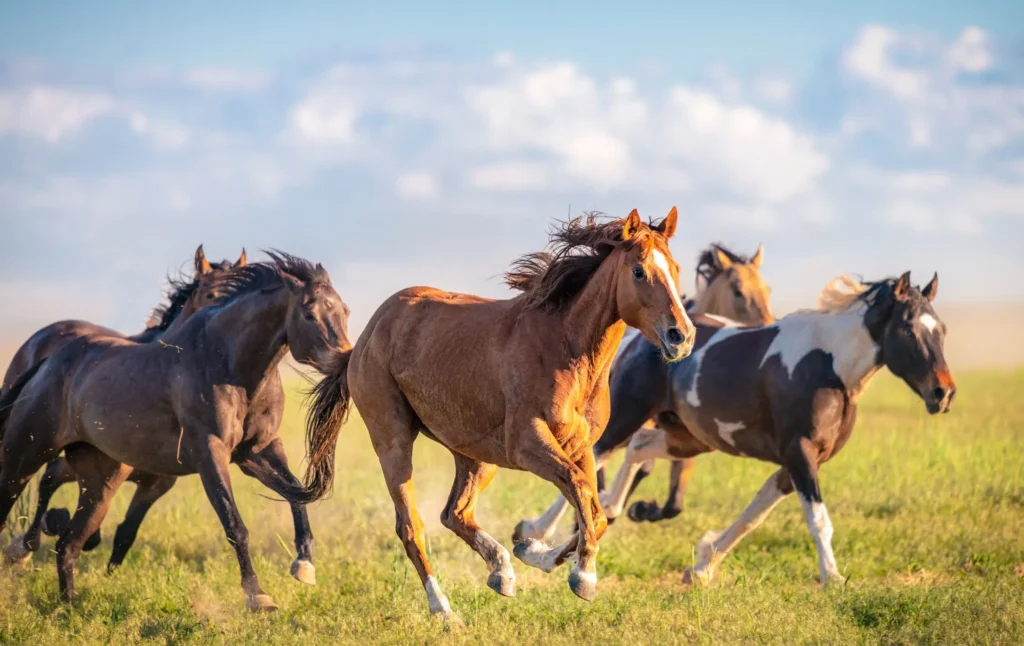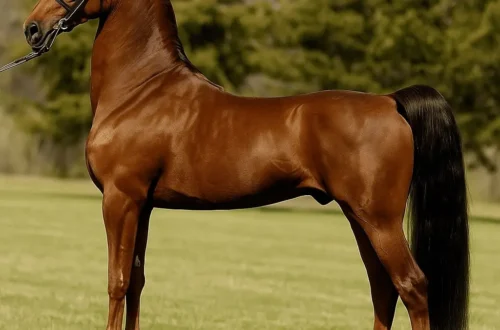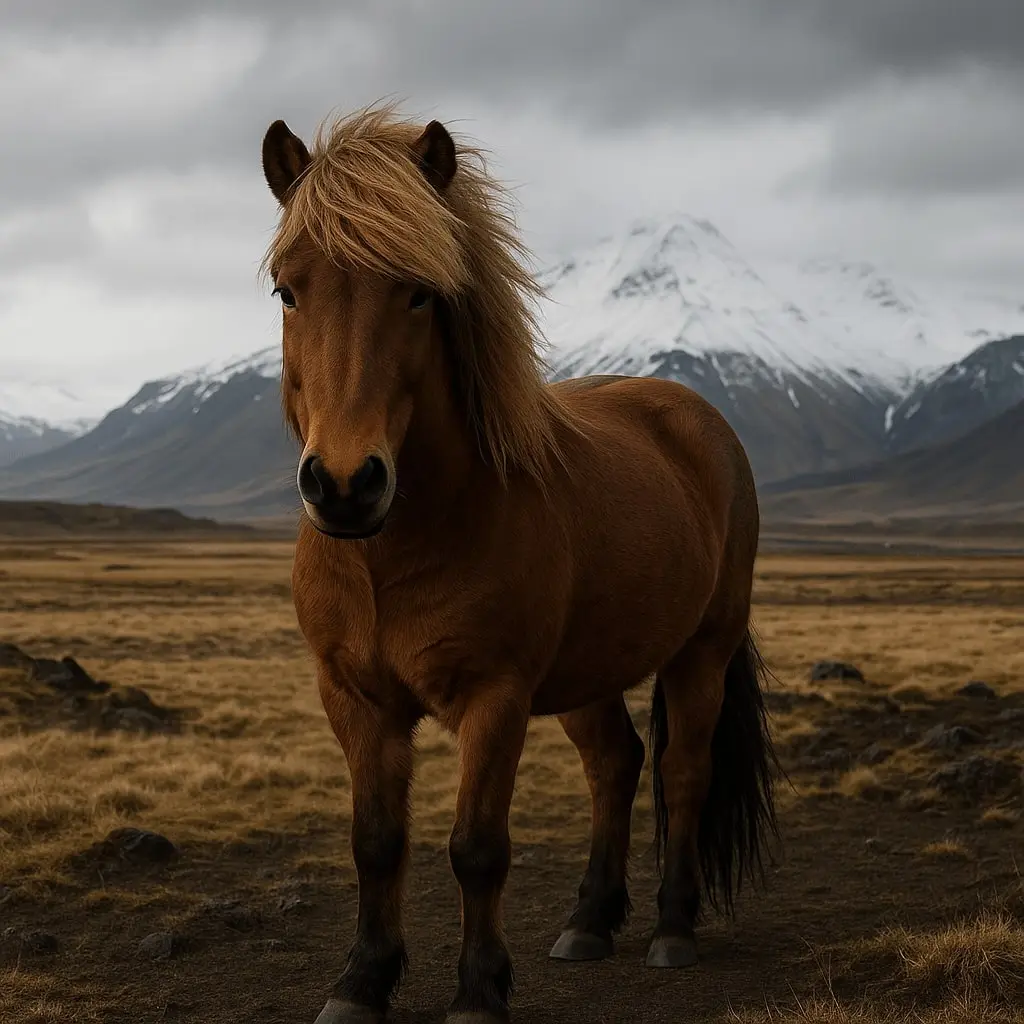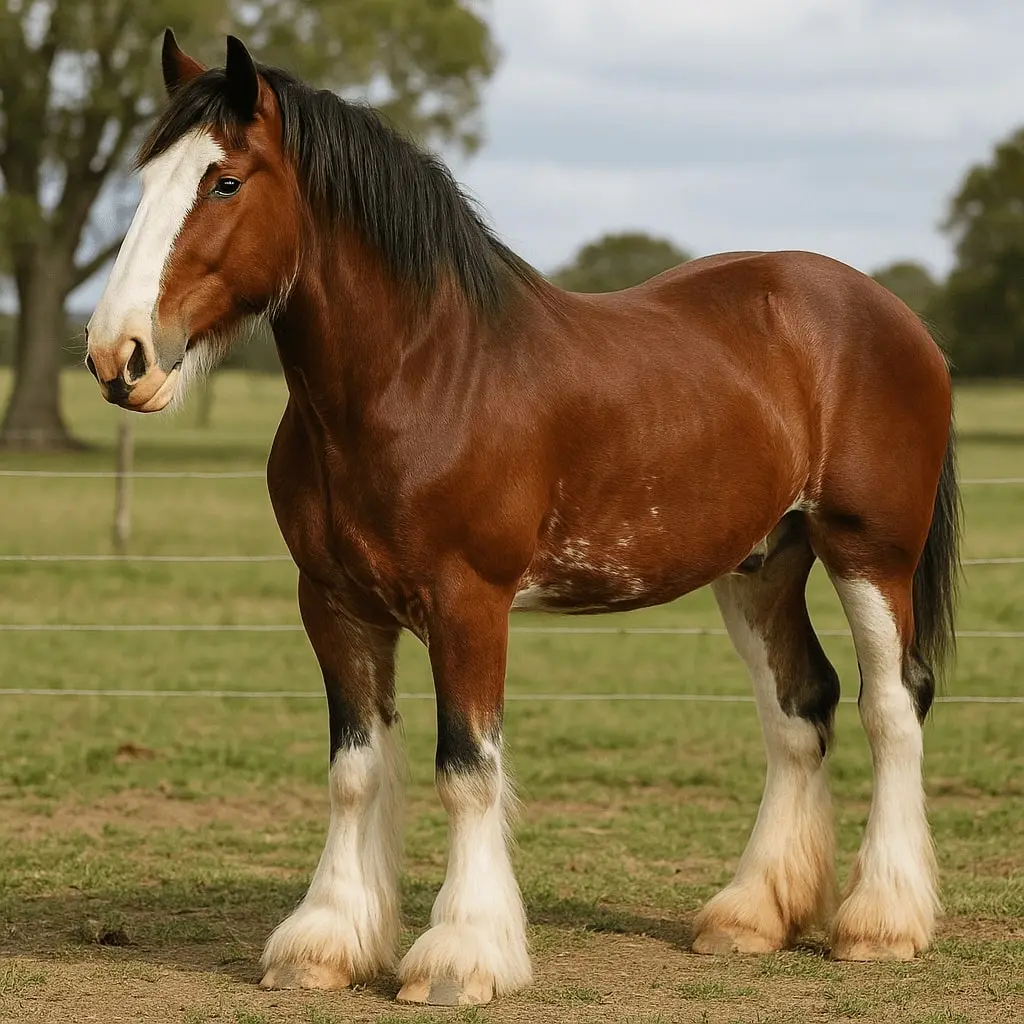Mustang horses are wild, free-roaming horses in the Western United States. They originally came from horses that Spanish explorers brought to America in the 1500s. The name “mustang” comes from a Spanish word meaning “wild” or “stray”. These horses are often seen as a symbol of the American West. In this blog by I Heart Horses, we will learn fun facts about mustang horses.
Mustang Horses Breed Profile
- History: Mustangs originated from Spanish horses brought to the Americas by early explorers. Over the years, some horses escaped or were released and formed wild herds on the Plains. These horses changed life for Native American tribes on the Great Plains. In 1971, the U.S. passed a law to protect mustangs and burros roaming public lands.
- Appearance: Mustangs are usually medium-sized horses. They typically stand about 14 to 15 hands tall (roughly 4.5 to 5 feet) and weigh around 800 pounds. Many mustangs are bay or chestnut, but they also come in black, gray, roan, palomino and other colors. Some have special markings, with stripes, spots or patches on their coats. These horses have very strong hooves and legs, which makes them surefooted on rocky or rough ground.
- Temperament: Mustang horses live in the wild, so they are naturally alert and watchful. A young or wild mustang can be shy or nervous around people at first. But with gentle training over time, many mustangs become calm and friendly. Mustangs are also smart and resilient. They live in family groups called bands, usually led by one strong stallion (a male horse) who watches over several mares (females) and foals.
- Culture: In American culture, mustangs are icons of the Wild West. They stand for freedom and the spirit of the frontier. You will often see images of wild horses running free in Western movies and art. Today, mustangs are protected by law. The 1971 Wild Horse and Burro Act makes it illegal to harm or capture wild horses like mustangs on public lands. Thanks to this protection, there are still about 73,000 wild horses and burros roaming U.S. public lands.
Fun Facts About Mustang Horses

Mustangs have many interesting traits. Here are some fun facts about mustang horses:
- Mustangs are very tough. In the wild, they survive on sparse food, eating dry grasses and plants.
- Mustangs are fast runners. They can gallop at speeds of about 35–50 miles per hour.
- Mustangs come in many colors. You can find bay (reddish-brown) and chestnut mustangs most often, but they can also be black, gray, palomino (golden), or other colors. Many mustangs have special markings like stripes, spots or patches on their coats.
- Mustangs have very strong hooves. Their hard, durable feet let them walk long distances over rocks and rough ground without hurting their feet. People sometimes say mustangs have “hooves of steel.”
- Mustangs live in family groups. A dominant male stallion leads a herd (called a “band”) of mares and foals. The stallion protects the band from danger.
- Wild mustangs are protected by law. It’s illegal to harass or harm them on public lands in the U.S..
- There are still tens of thousands of wild mustangs today. The U.S. Bureau of Land Management estimates about 73,000 wild horses and burros roam public lands.
- Long ago, mustangs changed history. Native American tribes began using horses (brought by the Spanish) to hunt buffalo and travel, which changed their way of life.
Fun Facts About Mustang Horses for Kids
Here are some fun Mustang horse facts for kids to enjoy:
- Mustangs are wild horses that live in the Western United States.
- They usually stand about 4.5 to 5 feet tall at the shoulder and weigh around 800 pounds.
- Mustangs can run very fast – up to about 30 to 40 miles per hour.
- Mustangs come in many colors, such as brown, black, gray, or even a mix of colors.
- Mustang families live together. A lead stallion (male horse) watches over his mares and foals (baby horses).
- Wild mustangs mostly eat grass and plants from the desert or plains.
Facts About Mustang Horses That Make Them So Special
Some facts about mustang horses that make them so special include:
- Hardy and Surefooted: Mustangs have very strong hooves and legs, so they can walk easily on rocky, desert ground.
- Amazing Endurance: Mustangs can travel long distances without getting tired. Their bodies are built for speed and stamina.
- Beautiful Colors: Mustangs come in a wide range of coat colors and patterns, which makes each horse unique and easy to spot.
- Great Speed: Mustangs can sprint up to 35–50 miles per hour on open range.
- Smart and Cautious: Mustangs are known to be intelligent and alert. They pay attention to their surroundings, which helps them stay safe in the wild.
- Protected Wild Horses: Mustangs are legally protected by the U.S. government, which makes them special symbols of America’s wildlife.
Mustang Horse And Ford Mustang – Behind The Scenes

The story of the Mustang Horse and Ford Mustang is about freedom and power.
Mustang horses are wild and free. They run across the plains of the American West. These horses are strong and fast. They live without fences or owners. People see them as a symbol of freedom.
In 1964, Ford made a new car. They wanted a name that showed speed and spirit. Some say the name came from the P-51 Mustang, a World War II plane. Others say it was named after the wild horse. Robert J. Eggert, a Ford manager, loved horses. He got a book called “The Mustangs” as a gift. This book gave him the idea for the car’s name.
The Ford Mustang logo shows a horse running free. It faces left to show it is wild, not tamed.
The Mustang Horse and Ford Mustang both stand for freedom and strength. They remind us of the wild spirit that lives in all of us.
Q&A: Common Questions About Mustangs
- Q: What is a Mustang horse?
A: A mustang is a free-roaming horse of the Western United States. Mustangs descended from horses brought to the Americas by Spanish explorers, but now live in the wild without owners. - Q: Where did Mustang horses come from?
A: Mustangs come from horses that Spanish explorers brought to North America in the 1500s. Over hundreds of years, some of these horses escaped or were released and formed feral herds. - Q: How big are Mustangs?
A: Most mustangs stand about 14 to 15 hands high (around 4.5 to 5 feet) at the shoulder and weigh about 800 pounds. This makes them smaller than many other horse breeds. - Q: How fast can Mustangs run?
A: Mustangs are fast runners. They can gallop at speeds of about 35 to 50 miles per hour. This helps them escape predators and travel across large ranges. - Q: What do Mustangs eat?
A: Mustangs mostly eat grasses and other plants found on the rangelands. They are “easy keepers,” meaning they survive on tough forage like grass and brush. They don’t need rich, cultivated feed to stay healthy. - Q: How long do Mustangs live?
A: In the wild, mustangs can live up to about 36 years. This is a bit shorter than domestic horses, but still a long life for a wild animal. - Q: How many Mustangs are there today?
A: The U.S. government estimates there are roughly 73,000 wild horses and burros on public lands as of 2024. This number includes mustangs and wild burros together. - Q: Are Mustangs protected by law?
A: Yes. Mustangs are protected under the Wild Free-Roaming Horses and Burros Act of 1971. This law makes it illegal to harm or harass wild horses on federal lands. - Q: How much does a mustang horse weigh
A: A mustang horse typically weighs around 800 pounds. This weight can vary a little depending on the individual horse, their age, and their diet. Mustangs are known for being smaller and lighter than many other horse breeds, which helps them move quickly and easily over rough ground.
Fun Facts About Mustang Horses – In A Nutshell
We’ve shared many fun facts about mustang horses! These wild horses are tough, fast, and colorful, and they carry a piece of American history. Mustangs live freely on public lands and are protected by law, so you can still see them today. We hope you enjoyed learning about mustangs. To learn more, check out resources like the U.S. Bureau of Land Management’s wild horse page or the Mustang Heritage Foundation. Keep exploring and you might discover even more fun facts about mustangs!
Sources: Information in this article comes from reputable sources such as Wikipedia, scientific articles, the Bureau of Land Management, and the Mustang Heritage Foundation. These sources help ensure the facts are accurate and trustworthy.





